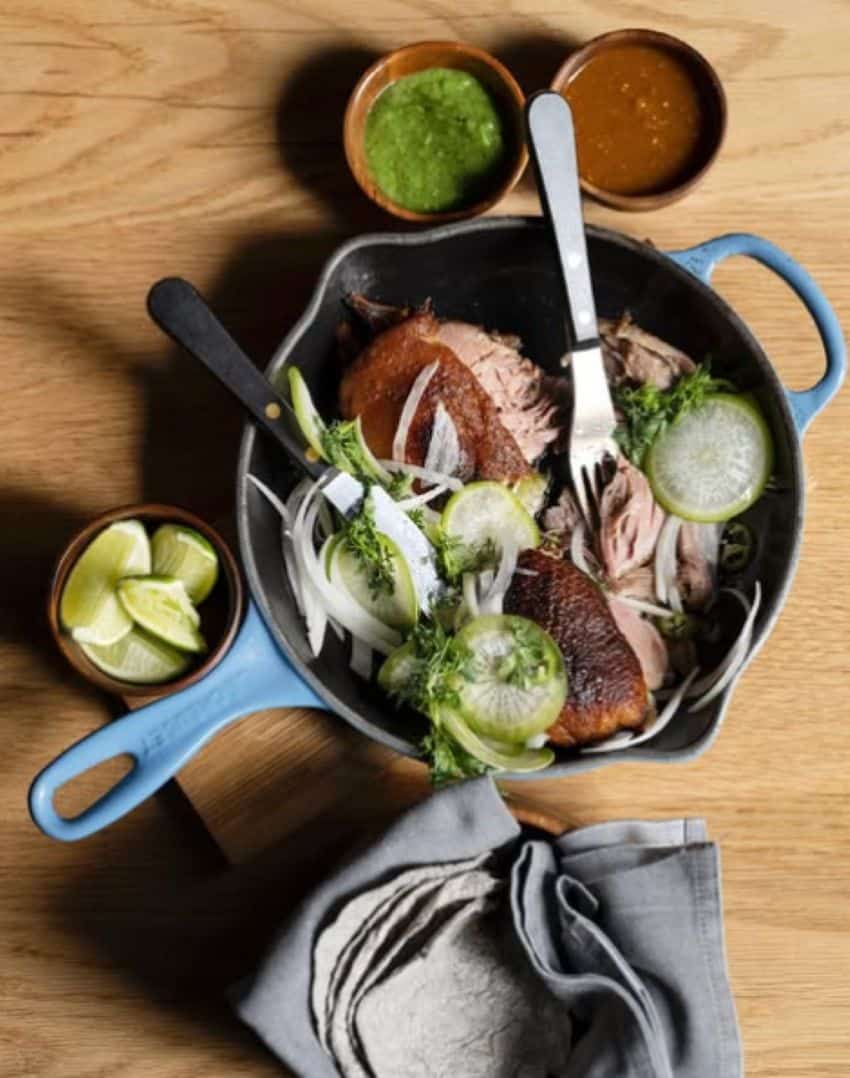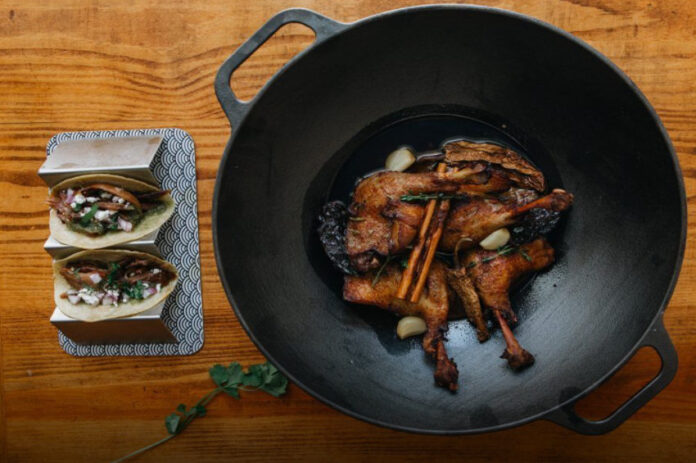Cosme, a restaurant on East 21st Street in New York City’s Flatiron District, opened in 2014. It’s Mexican, yes, but not the kind of Mexican of the Midwest that’s actually Tex-Mex and is smothered in cheddar cheese and sour cream.
It’s the kind of Mexican that wears black and doesn’t explain itself. Which is to say, it’s Mexican food as interpreted by Chef Enrique Olvera — who, at the time, was already famous for a Mexico City restaurant called Pujol, which either stirs up or cures people’s existential dread with their famous 1,000-day-old mole.

They served dishes that made food critics write like they’d just discovered adjectives. There was the duck carnitas — which we’ll get to in a minute — and cobia al pastor, and the now-famous corn husk meringue, which is what happens when you turn a tamale into a French dessert and somehow make it taste like nostalgia.
Cosme made it onto The World’s 50 Best Restaurants list. It got reviewed, revered, deconstructed, meme-ified. The staff danced in the kitchen. Sometimes with each other. Sometimes with the duck. It was a success, in the way few things are in New York without also being soul-crushing.
Now, about the duck carnitas.
Traditionally, carnitas is made with pork, slow-cooked in fat until the meat gives up, collapses, and becomes sublime. It’s a peasant dish — all time and fire and patience. Cosme swapped the pig for duck. And duck, unlike pork, is not a forgiving animal. It’s gamier, richer, and packed with the kind of dark meat that tastes like it remembers things.
Cooking duck this way — slowly, submerged in its own fat, then shredded and crisped — is an act of culinary judo. You don’t fight the duck. You let it be itself, just more so.
And that’s the genius.

Cosme didn’t invent duck carnitas. But it introduced it to a city where duck is usually lacquered or stuffed into ravioli, and carnitas are usually US $3 and wrapped in foil. By making this dish with care, with tradition, and then charging $89 for it — they elevated it. Or ruined it. Or both. Capitalism is tricky that way.
But in that moment, duck carnitas became more than food. It became an argument: that the old ways and the new ones could meet somewhere in the middle, preferably over tortillas. If you try to make this recipe, let me know what you think in the comments!
Duck Carnitas (Inspired by Cosme NYC)
Ingredients
Duck:
- 1 whole duck (about 4–5 lbs), cut into quarters
- Kosher salt
- Freshly ground black pepper
Aromatics and Flavorings:
- 1 head garlic, halved crosswise
- 1 large white onion, sliced
- 2 oranges, halved
- 1 cinnamon stick
- 3 bay leaves
- 1 tablespoon black peppercorns
- 1 teaspoon dried oregano
- Optional: 2–3 whole cloves, 1 dried ancho chile (torn), splash of mezcal
Fat:
- Enough duck fat to cover the duck (or a mix of olive oil and lard as a substitute)
Get a closer look at what you’re making here in this video.
Instructions
- Season the Duck:
Pat duck pieces dry and season all over with kosher salt and black pepper. Refrigerate uncovered for at least 2 hours or overnight to allow the skin to dry slightly. - Preheat Oven:
Preheat oven to 275°F (135°C). - Assemble Ingredients in Pot:
In a large Dutch oven or heavy oven-safe pot, place duck pieces in a single layer. Add garlic, onion, orange halves (squeeze juice into the pot before adding), cinnamon stick, bay leaves, peppercorns, oregano, and any optional aromatics. - Add Fat:
Pour duck fat (or substitute fat) over the contents until the duck is fully submerged. - Slow Cook:
Bring the pot to a gentle simmer on the stovetop, then transfer to the oven. Cook uncovered for 2.5 to 3 hours, or until the duck is tender and easily pulled apart with a fork. - Shred and Crisp:
Remove duck from the fat and let cool slightly. Shred the meat into bite-sized chunks. In a large skillet over medium-high heat, add a small amount of reserved duck fat and crisp the shredded meat until golden and browned in spots.
Stephen Randall has lived in Mexico since 2018 by way of Kentucky, and before that, Germany. He’s an enthusiastic amateur chef who takes inspiration from many different cuisines, with favorites including Mexican and Mediterranean.
